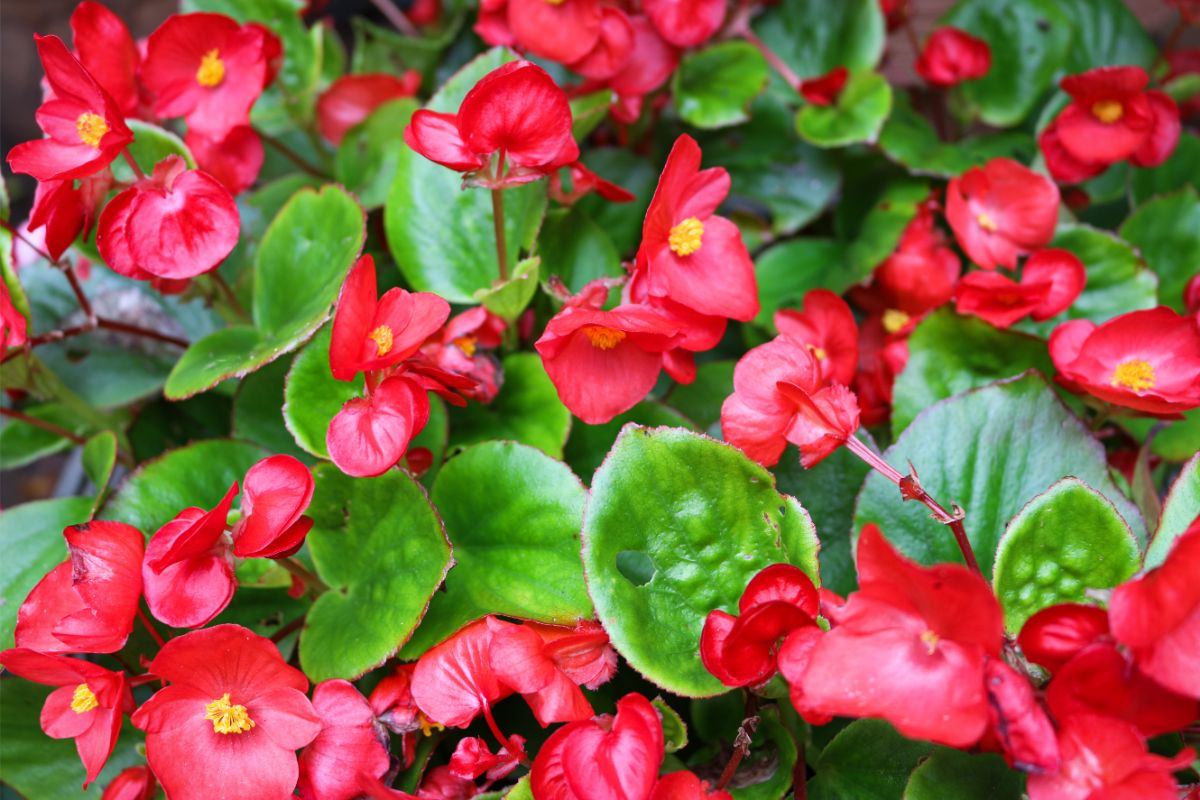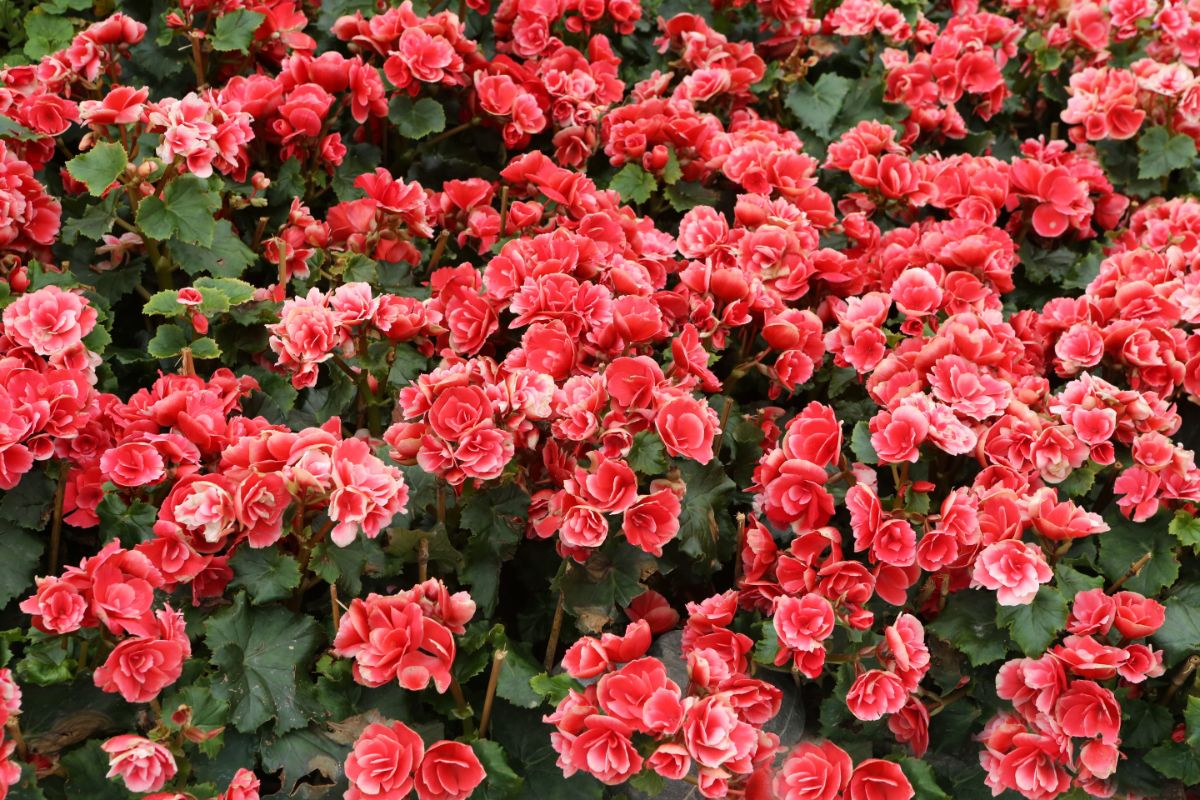When it comes to gardening, it can be tricky to get to grips with all the information – especially when you are a new gardener in their first year of planting.

One of the main areas of confusion can be regarding the kinds of plants you can grow – with terms like perennial, biennial, and annual acting as further sources of confusion for many.
This is especially true for plants like begonias, which are known for being contradictory when it comes to their growing patterns and classification.
But this begs the question: are begonias perennial, and what are the best ways to promote good growth?
Perennial Vs Annual: The Difference
Before we get onto begonias, it is first important to establish what each of these terms mean, and the differences that are included therein.
What Does Perennial Mean?
The term ‘perennial’ shares the same origin as the word ‘perpetual’ – meaning continuous – and in the context of plants this refers to those species that are capable of surviving for longer than two years.
This is a common factor with wild flowers in particular, and many species are capable of blooming anew each year without the need for new seeds.
What Does Annual Mean?
This can be particularly confusing for beginners, and it is perfectly understandable when you think about it – after all, the term ‘annual’ could be misconstrued as lasting more than a year.
However, the term annual actually means the opposite, referring to plants that grow, bloom, and then die off in the fall/winter time – shedding new seeds and potentially growing a new plant in their place.
This means that these plants can be a lot more work to grow and maintain, and that a little more effort is needed to ensure a good bloom each year – ensuring the various components of healthy growth are in place before each new springtime sowing period.
Are Begonias Perennial?
Unfortunately for those hoping for an easy grower, begonias are mostly annual plants – living out their life cycle in one seasonal calendar, and then dying off after releasing new seeds.
This is mainly because of the sensitivity of the plant in general – meaning that growing them each year as annual plants is effectively easier in this case, even with the added work of planting and developing a new plant each time.
However, there are many people who grow them as tender perennials – although as their name suggests these are extremely vulnerable to environmental changes, soil quality, and feeding schedule, and can be difficult to maintain in the long term.
In particular, tender perennials are sensitive to colder temperatures, meaning that begonias can only be maintained as such in greenhouse conditions, or in environments where the temperature is pretty constant year round.
What Areas Are Suitable For Begonias?
As mentioned above, only those who live in consistently warm or mild climates stand a chance of raising begonias as tender perennials – purely due to the strict need for consistency.
In these conditions, the plants do not die – instead entering a phase of dormancy during the fall and the wintertime – eventually being rejuvenated in the spring and blooming once more.
As such, raising begonias as tender perennials can only really be successful in zone 9 or 10 climates.
What Are Zone 9/10 Climates?
These terms refer to something called ‘hardiness zones’ – areas where there is a generally consistent minimum climate within which most plant species can continually thrive and bloom.
Within the context of the United States for example, the deep south and the southern most coastlines are considered to be within this zone 9/10 bracket, meaning that those areas are most suited to maintaining begonias and similarly sensitive plants as tender perennials throughout the year.
These areas suit the needs of begonias, namely due to their resistance to warmer climates, and the fact that they have a naturally lengthy blooming period – something that they can effectively take advantage of in such regions.
However, with this scale also comes the extremes at either end – with places like Alaska registering as zone 1 some of the time, and places like Hawaii and Puerto Rico being around 12 most of the time.
This means that in either case, most species of plants cannot survive and thrive – which explains the general sparseness of flora in these regions of the Americas.
How To Protect Against The Winter?
Of course, if you are dead set at making the most of your begonias, and want to ensure they can survive the winter, then there are certain things you can do to make sure this happens.

However, the chances of this happening also depends on the kind of begonia you have – something that either expands or limits your options, and determines what steps you will need to take.
Leave Them In Ground
If you live in the above mentioned zones (9 or 10), then you can comfortably leave them in the ground during this period.
Begonias will go into a dormant state during the fall and the winter, and the lack of significant change in the temperature of the environment will ensure their survival into next spring.
However, during this time, it is important to keep them well watered, but also well drained – as this will stop them becoming too dry in the wintertime.
Growing In Pots
Of course, for those living in less consistent regions around the world, you could try growing begonias in pots.
This means that you can leave them outside during the hotter summer months (May to September), and then when the temperatures drop during the fall and winter months, you can bring them inside to shelter them from such harsh conditions.
This can be a good way of raising them as tender perennials in less than ideal settings, and can mean that you get the most of your plants for longer.
Both fibrous and tuberous begonias can be grown in pots, and for many this is one of the best options available to them.
This is generally the only way to grow begonias as perennials in environments that experience frost. Any other way will end up in the death of the plant, or extensive damage.
But as this article highlights, those with determination and knowledge can still make suitable preparations.
Digging Up For Storage
However, if you are not in a zone 9 or 10 climate, and you want to ensure your begonias survival into the next season, then you could dig them up as all approaches, and store them somewhere safe and warm throughout the colder period.
This only works for tuberous begonias, and if you try it on the fibrous kind then they will almost definitely die.
For proper storage, dig the tuberous begonias out of the soil, brush off the excess, and allow them to naturally dry out over a period of days.
This will stop them from developing mold during the colder months.
You should then put them in a dry container with wood chips, sawdust, or some other dry materials inside – keeping them dry and warm for the foreseeable future.
Final Thoughts
And there we have it, everything you need to know about begonias, and whether or not they are considered perennial plants.
It’s certainly true that gardening can be tricky to begin with, as can learning the needs and requirements that all distinct plants have.
Luckily though, there have never been more resources to help new gardeners get the hang of things – and with a little research you too can have a thriving garden in no time.
But if you are looking for great perennial plants to add to your garden, then why not consider planting begonias?
- Interesting Flowers That Start With A - July 21, 2023
- Interesting Flowers Beginning With H - July 21, 2023
- 14 Fascinating Flowers That Begin With C - July 20, 2023
